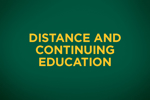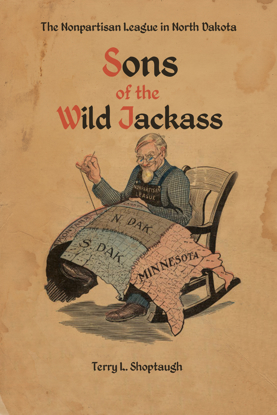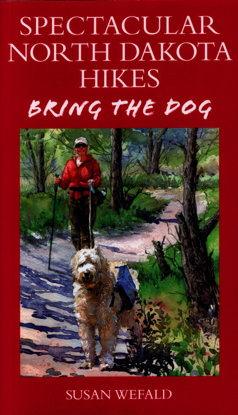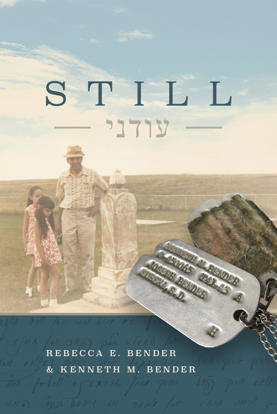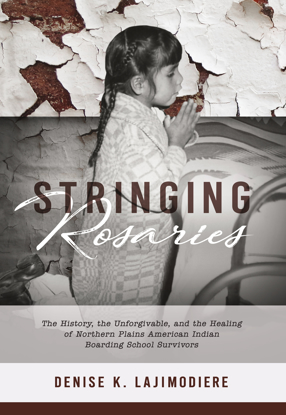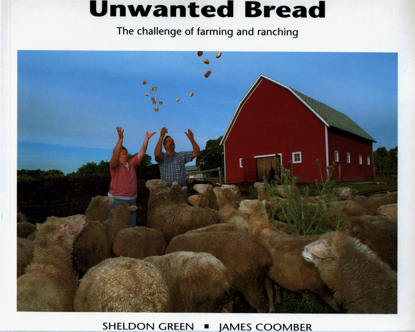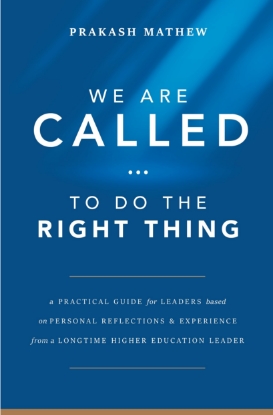Nonfiction
Sons of the Wild Jackass: The Nonpartisan League in North Dakota
Drawing on newspapers, interviews and collections of private papers, Sons of the Wild Jackass uses ground-level perspectives to tell the story of the League.
Hardcover, 264 pp., 23 photographs, index, bibliography
Spectacular North Dakota Hikes
Two of North Dakota's most avid hikers, Susan Wefald and her dog Sandy, share their notes on 50 of North Dakota's best day hikes. Armchair and seasoned hikers alike will enjoy exploring North Dakota's diverse landscape with Susan and Sandy. Learn the locations of spectacular vistas. Try one of Susan's picnic lunches. Expand neighborhood strolls into the great outdoors. Bring your dog!
By Susan Wefald
ISBN 978-0-911042-75-7
Copyright 2011
Softcover
Still
More than four hundred Russian and Romanian Jewish homesteaders settled on about eighty-five farms in McIntosh County, North Dakota, beginning in 1905. After clearing rocks and boulders, growing wheat and flax, raising cattle and chickens, and selling cream from their sod houses, most were successful enough to own their own land.
Still is a history of five generations, a family we meet first as they flee Odessa and last as they make their ways as American Jews . . . and as Dakota farmers, as students and storekeepers, as soldiers and lawyers, and even as a teen in an international competition who stands face-to-face with Netanyahu. Rebecca Bender and Kenneth Bender answer the question recently posed to Rebecca by a newspaper reporter: Are you still Jewish?
Paperback, 370 pp
Stringing Rosaries: The History, the Unforgivable, and the Healing of Northern Plains American Indian Boarding School Survivors (hardcover)
Denise Lajimodiere's interest in American Indian boarding school survivors’ stories evolved from recording her father and other family members speaking of their experiences. Her research helped her to gain insight, a deeper understanding of her parents, and how and why she and her siblings were parented in the way they were. That insight led her to an emotional ceremony of forgiveness, described in the last chapter of Stringing Rosaries.
The journey to record survivors’ stories led her through the Dakotas and Minnesota and into the personal and private space of boarding school survivors. While there, she heard stories that they had never shared before. She came to an understanding of new terms: historical and intergenerational trauma, soul wound.
Stringing Rosaries presents a brief history of the boarding school programs for Indigenous Americans, followed by sixteen interviews with boarding school survivors, and ending with the author's own healing journey with her father.
Hardcover, 332 pp., 41 black and white photographs, updated listing of more than 400 US boarding schools by state, appendix, bibliography, and index.
Unwanted Bread
Farmers talk of their frustrations and opportunities in this personal glimpse into rural life today. Readers will discover insights into the expensive, complicated and often emotional business of farming and ranching. "One way to understand what is happening in farming today is to listen to those who are involved in it," write Green and Coomber. That is what they do, and invite their readers to do, in Unwanted Bread. Here is the story of farming and ranching today as told by farmers and ranchers, along with astute commentators who know the country well. Visually striking, thought-provoking photographs accompany the interviews and essays. "If we could sit down with a farmer over coffee and listen to his or her story," Green and Coomber say, "we'd begin to understand the challenge farmers are facing today." So pour yourself some coffee, and help yourself to Unwanted Bread.
By:Sheldon Green and Jim Coomber
We Are Called...To Do the Right Thing: A Practical Guide for Leaders Based on Personal Reflections & Experience from a Longtime Higher Education Leader
We Are Called . . . To Do the Right Thing: A Practical Guide for Leaders Based on Personal Reflections & Experience from a Longtime Higher Education Leader
Prakash Mathew’s debut guide on leadership offers a compelling invitation to principled leadership with prudent and practical habits, gleaned from his almost four decades of student affairs work in higher education. We Are Called illustrates lessons in leadership with stories from a life well lived. Expounding on his 80/20 Principle, Prakash provides a plan for doing the right things for the right reasons.
We Are Called is of interest to leaders in higher education institutions (public and private), business leaders and organizations, religious organizations, start-up companies, search firms, and any organization seeking a change process, and as a training resource for boards, councils, and commissions.
Paperback, 120 pp., photos, index










